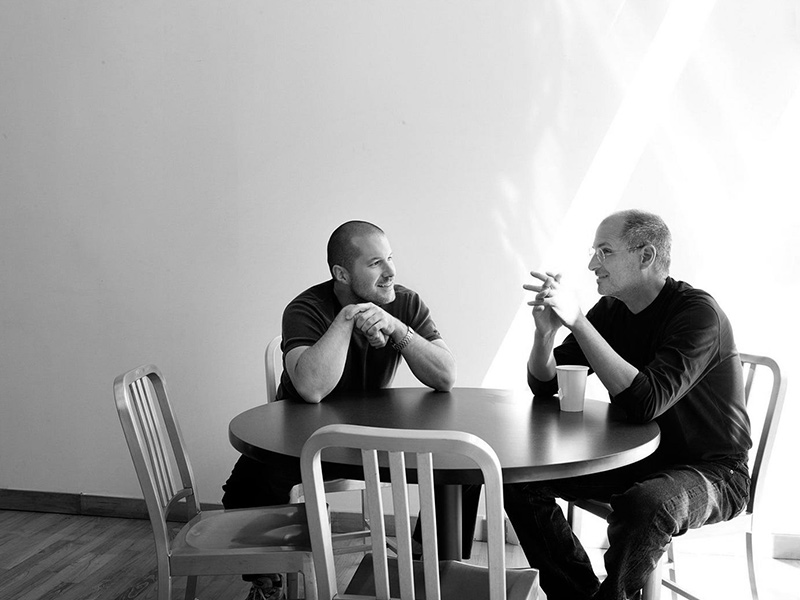The war of large language models, also called the LLM arms race, is fierce and unforgiving. It's all about survival of the fittest, and the rivalries in creating the best, the smartest, the most powerful, and the most useful.
When OpenAI introduced ChatGPT, its dramatic arrival made a what-once-was-considered a niche domain for machine learning researchers, a battleground for tech giants, startups, and open-source projects.
From OpenAI, Google DeepMind, Anthropic, Meta, Mistral, and others, as well as those from China like DeepSeek, Alibaba, Tencent and more, now compete for dominance in model size, inference speed, multimodal capabilities, alignment, cost, and specialization.
But the real frontier in this next era of AI may not be just the model, but it’s how the intelligence meets the human.
While LLMs do get smarter and more powerful and more useful, as a software alone, they have limits.
That’s why what Altman and former Apple chief of design Jony Ive are quietly building feels like the boldest move yet: giving AI its own hardware, rewriting the rules of interaction.

From the early days, AI lived inside data centers; users accessed them through screens, keyboards, phones, or smart speakers. But a growing tension has persisted: people rely on their devices, but often feel disconnected, overwhelmed, anxious.
Jony Ive frames it most poetically:
" [The devices should] make us happy, and fulfilled, and more peaceful, and less anxious, and less disconnected."
In other words, Ive wants future AI devices to only boost efficiency, but also bring more social good into the world. He wants harmony.
"I mean, this is serious stuff. Truly, the ramifications of not caring [about technology’s impact], not being careful, are truly horrendous. But in terms of the devices that we design, in terms of the interfaces that we design, if we can’t smile, honestly, if it’s just another deeply serious, exclusive thing, I think that would do us all a huge disservice."
OpenAI CEO Sam Altman echoes Ive's ambition.
During OpenAI’s developer conference in San Francisco, Altman spoke in vague terms about the "family of devices" the pair are working to develop.
"As great as phones and computers are, there’s something new to do," Altman said. “Hardware is hard. Figuring out new computing form factors is hard."
"I think we have a chance to do something amazing, but it will take a while."

For all it's worth, the LLM war is no longer just about model metrics. Instead, it's starting to get into embodiment, or how companies are integrating AI into people's daily lives.
The goal is to combine the needed hardware, the required contextual intelligence, a trustworthy behavior, all in one package, in order to define the next generation of computing.
The potential is staggering.
After all, Human-Computer Interaction (HCI) has long lived behind screens, hidden in servers, apps, and interfaces that separate human experience from digital intelligence.
People have grown used to summoning it with taps, swipes, and prompts, always looking into a device to interact with what’s inside. But OpenAI and Jony Ive seem intent on breaking that barrier entirely.
Their vision hints at a world where computation steps out from behind the glass, to where AI isn’t something users open, but something that quietly exists around them. A companion that listens, observes, and responds without demanding constant attention. The kind of presence that feels more like a friend than a feature.
That’s what makes this project so intriguing. It’s not about specs or processing speed; it’s about intimacy, emotion, and trust.
Based on Ive’s philosophy of "making things that just work," and blending it with Altman’s pursuit of intelligence feels natural, and human.
Of course, that dream comes with peril.
An always-on AI that listens and learns could feel invasive if handled poorly. Too helpful, and it’s creepy; too distant, and it’s useless. Striking that balance can create a sense of warmth without the weirdness, may be the hardest design challenge of all.
Ive said that his team has generated "15 to 20 really compelling product" ideas on the journey to find the right kind of hardware to focus the company’s efforts on.

The partnership between Ive and OpenAI began back in 2024, when it was reported that Ive's company LoveForm was working with OpenAI on the development of an AI hardware device that is "less socially disruptive than the iPhone." Then, it was in May 2025, that it was announced OpenAI would acquire Ive’s AI venture, called io, in a deal that values the company at $6.5 billion.
As part of the deal, OpenAI would become a customer of LoveFrom with Ive and LoveFrom assuming creative and design responsibilities across all of OpenAI’s operations.
It was on July 9, 2025, when OpenAI said that the Ive's io Products, Inc. team has officially merged with OpenAI, and that Ive and LoveFrom would remain independent and have assumed deep design and creative responsibilities across OpenAI.
If this project succeed, the result could mark a turning point in history: the next wave of AI won’t live behind screens or keyboards.
If this future AI device can shift from being something users open and summon, to something that exists around them, intelligent, ambient, kind, then perhaps the next revolution won’t be “AI in your phone.” It’ll be AI that lives with you.
It will become a technology that lives beside us, perceptive, personal, and perhaps, finally, properly "humane".

And that, perhaps, is the true endgame of artificial intelligence: not domination that people feared, not automation that the LLM war is racing towards, but companionship.
A form of technology that understands our rhythms instead of interrupting them, that observes without judging, and that enhances life in the background rather than demanding to be the center of it.
In this vision, the line between human and machine softens. We stop thinking of AI as a tool and start treating it as presence, subtle, ever-learning, woven into the fabric of our daily existence. It won’t ask for attention; it will earn it through quiet usefulness, empathy, and trust.
That’s the paradox Altman and Ive seem to be chasing: building something invisible yet indispensable, intelligent yet humble.
When products like Humane Inc.'s AI Pin and Rabbit Inc.'s Rabbit r1 gained little traction, Ive and Altman are hoping to show that they can do things differently.
Just as the iPhone once redefined what "personal technology" meant, the two could redefine what "intelligent presence" means.
